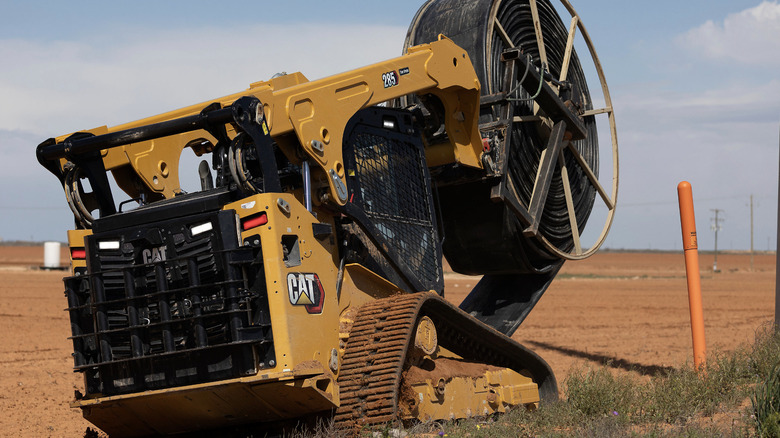What To Know About The 285, Caterpillar's New Largest CTL
For well over a century, Caterpillar Inc., more commonly recognized by their logo "CAT," has been consistently recognized as a leading innovator of articulated track loaders, engines, dozers, and even a broad spectrum of useful power tools. Their legacy dates back to 1904 when co-founder Benjamin Holt installed track bands instead of wheels on a standard farm tractor to improve mobility across loose sediment.
Fast-forward to the present day, and the company is still manufacturing high-caliber industrial equipment while simultaneously staying trendy by going viral for its eye-catching yet totally fake company truck. More recently, the company announced the launch of eight cutting-edge products with the goal of resolving the demands of its consumers. The line-up consists of new models of the Skid Steer Loader (SSL) and the Compact Track Loader (CTL), which includes the brand new 285 CTL.
When comparing the attributes of SSLs with CTL, the latter looks like a member of a downsized tank division due to its rubber tracks and sturdier, more condensed body. And the 285 CTL model is no exception to this rule, weighing in at 13,307 pounds and toting a gross power of 111 hp courtesy of its next-generation CAT C3.6TA diesel engine. Replacing the older D3 models, CAT's latest and largest CTL model offers a wide variety of additional features to help increase productivity at work sites.
The 285 brings greater hydraulic standards and comfortability
Given its trademark rotating tracks, CTLs are more commonly used on sites where the terrain is uneven, like forests or quarries. Fortunately, the new 285 model strikes a strong balance between performance and stability because of the integration of an equalizer bar that reinforces its oscillating undercarriage. This particular structure enables the CTL to reach a greater lift height than its predecessor to the effect of approximately 146 inches and 4,719 pound rated operating capacity while maintaining seamless control and stability over rough ground.
Furthermore, to generate the force necessary to carry heavier volumes, the 285 has a higher hydraulic capacity, with a standard hydraulic pressure of 3,500 psi, as well as the optional High Flow XPS factory option that can boost levels up to 4,061 psi. The elevated capacity plus the re-designed lift arms that are heftier than previous models make it easier for the 285 to handle a variety of grapples, drills, buckets, and other attachments. The interior cabin of the 285 CTL has also experienced a notable face-lift. Contemporary touchscreen monitors, ventilated seats, and an additional 3 inches of space added to the compartment go a long way to improving operator comfortability.
With advanced integration technology, the machine can recognize which type of tool attachment is being used and reconfigure the control panel to the appropriate setting. In comparison with the D3 models, the 285's cabin also provides the operator with broader range of view due to removable windows, a front panel unobscured by fuel tanks, and side-mounted cameras. While CTLs do tend to veer more expensive than their SSL counterparts, the value of the improved productivity and safety features of the 285 may prove well worth the cost.

